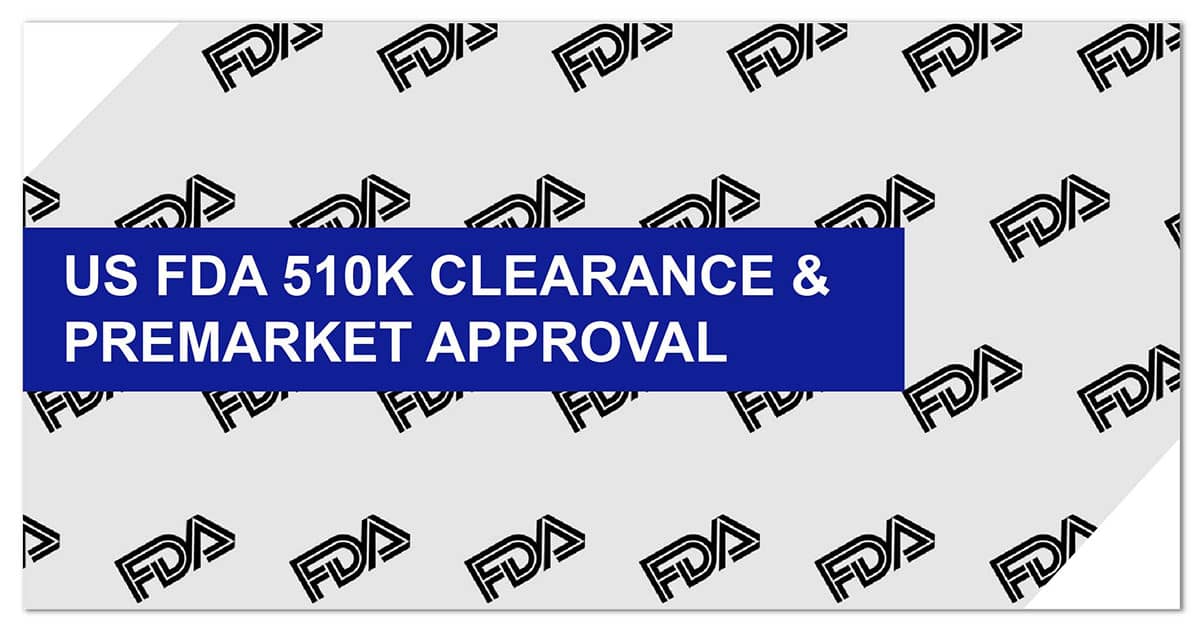FDA 510K Submission & Certification
US FDA Medical Devices Regulations
FDA 510(k) is necessary if you want to trade your medical devices in the US market. Achieving 510(k) Clerance is challenging aspect of medical device development. Operon strategist’s medical device regulatory consulting team will assist you in 510(k) clearance process. FDA 510(k) is name of process which determine that the device is safe and effective and hence manufacturers can legally sell that device in US market. Most of the class 1 medical devices are exempted from 510(k) requirements.

What is FDA 510(k)?
- It’s a process of determining that device is safe and effective and can be legally place onto the US market.
- FDA 510(k) is technical file which contains information of the device.
- Most of class 1 devices are exempted from 510(k) requirement.
Medical Device Classification For US FDA Registration:
FDA 510(k) medical device classification depend on intended use of the device. The devices are classified as Class 1, class2 and class 3 medical devices as per the risk associated with them.
Class | Type of Risk | Examples |
Class 1 | Low risk (General control) | Hospital furniture, Bandages |
Class 2 | Moderate risk | Catheters, surgical gloves |
Class 3 | High risk | Pacemakers, defibrillators |
The medical device classification can be confusing for manufacturers as they have limited exposure to the system. Class 1 devices are subjected to fewer regulatory requirements as compared to class 2 and class 3 devices. For the regulatory compliance of your medical device, you should know the class of your device, so that one can apply for 510(k) clearance or PMA process.
How to Register Medical Device in USFDA?
All companies who want to sell their product in USA market need to register with USFDA first. Most of the class1 devices are self-registered but class 2 devices need 510(k) submission whereas class 3 devices Pre-market submission (PMA) is needed. The medical device regulatory consultant can guide you for 510(k) submission or PMA process or you can visit to USFDA website.
How Can Operon Strategist's Help in USFDA Registration?
We have experienced team of professionals, who is closely working with notified bodies and fully aware with regulatory updates required for compliance of the device. If your device requires 510(k) approval our team will help you in identifying predicate device, evaluating the substantial equivalences, and assist you in creating 510(k) technical documents file. In addition to this we guide our clients to respond for additional information needed to FDA or to the queries arises if any. Our QMS specialized team helps manufacturers to comply with 21CFR part 820 QSR requirements.
Looking for Consultant?
To discuss your support need you can contact us enquiry@operonstartegist.com or you can WhatsApp us your queries we will answer them shortly.
FAQ
A 510K is a Premarket Submission made to FDA to state that the medical device which is to be marketed is at least as safe and effectual that is considerably equal to a legally marketed device that is not subject to PMA. A PMA is a premarket approval it is the process of scientific and regulatory review analyse the safety and effectiveness of Class III medical device the applicant must receive the FDA approval of its PMA application prior to the marketing the device. Companies doing 510k submissions have to compare their devices to one or more legally marketed devices and make and support their substantial equivalence claims. A lawfully marketed device is a device that has been legally marketed or a device that has been reclassified from Class III to Class II or Class I SE through the 510k process, or else a device that was granted marketing authorization.
The best way to expedite FDA approval for a medical device is to First research your requirements. As with any project, gathering specifications – in this case regulatory registration requirements – is paramount. Most firms have heard of the 510(k) Premarket Notification pathway, but there are others. If you cannot identify a 510(k) Predicate device that demonstrates Substantial Equivalence, then formally reach out to the FDA. There are outreach tools to help identify which pathway is right for you.
In order to get a product approved by FDA your product has to undergo product registration since it is the legal process that your product has to take for you to sell them legally to the public and that it is safe for consumption. Although they have general SOPs, like getting the license to operate (LTO) and the certificate of product registration (CPR) that will be issued to you by FDA.
You can search the FDA website for approved medical devices. Devices @FDA provides one place where you can find official information about FDA cleared and approved medical devices. You can use Devices @FDA to: Find out if and when medical devices were cleared or approved by FDA. Read summaries of medical devices currently on the market.
FDA regulates the sale of medical device products (including diagnostic tests) in the U.S. and monitors the safety of all regulated medical products. In the U.S., FDA regulates the sale of medical device products. Before a medical device can be legally sold in the U.S., the person or company that wants to sell the device must seek approval from the FDA. To gain approval, they must present evidence that the device is reasonably safe and effective for a particular use.
FDA regulates the sale of medical device products (including diagnostic tests) in the U.S. and monitors the safety of all regulated medical products. Before a medical device can be legally sold in the U.S., the person or company that wants to sell the device must seek approval from the FDA. Sold in the U.S., the person or company that wants to sell the device must seek approval from the FDA.
